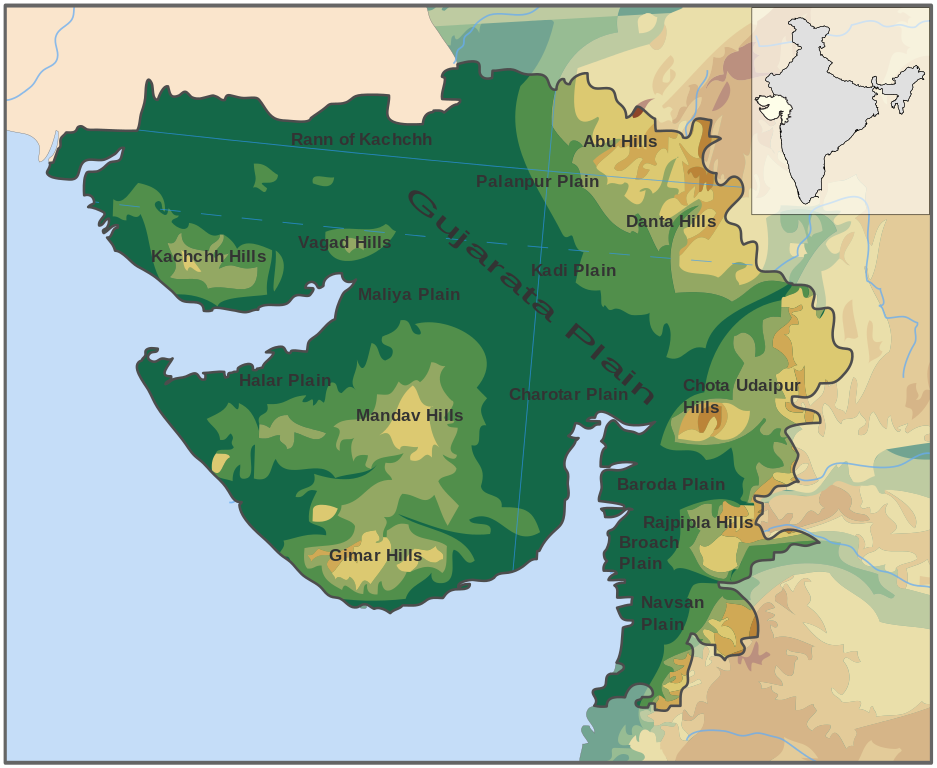Gujarat may add an enormous 46 GW of new renewables capacity by FY2029-30, to emerge as the top state in India. With 4-5 GW added annually, renewables could meet all of its incremental demand for electricity—according to the latest report by Institute for Energy Economics and Financial Analysis (IEEFA).
“This will be a dramatic shift in Gujarat’s electricity sector composition as renewables will form 70% of the capacity and 48% of generation by FY2029-30 while thermal power generation share will halve to 41% from 81% in FY2018-19,” stated the report entitled Gujarat’s Electricity Sector Transformation – A Role-model of India’s Electricity Transition.
Renewed push
The IEEFA report identified Gujarat as one of five leading Indian states for renewable energy in terms of both existing generation capacity as well as future potential.
Currently, the state’s electricity mix is dominated by thermal power sources. The 22.4 GW of thermal capacity comprises 15.8 GW of coal-fired and 6.6 GW of gas-fired capacity. This forms 69% of total capacity and 81% of generation in Gujarat, stated the report.
More than 90% of Gujarat’s coal-fired power plants use either expensive imported coal or domestic coal hauled via railways from mines located at a distance of more than 1,200 km in eastern Indian states of Odisha, Jharkhand or West Bengal.
Tim Buckley, co-author of the report and IEEFA’s director of energy finance studies, said: “Setting an ambitious new renewable energy target of 523 GW by 2030 is a clear indication by the central government of the direction the states must pull towards.”
“Refocusing efforts on continuing its already promising renewable capacity additions would see the State [Gujarat] come out on top as the country’s renewable leader,” he added.
While Gujarat lifted its renewable energy target to 30 GW from 17 GW in July 2019, the state could be more ambitious, with India’s Ministry of New and Renewable Energy estimating Gujarat’s renewable energy potential to be 72.7 GW, equally balanced between solar and wind energy potential.
Co-author Kashish Shah, IEEFA energy analyst, said: “Gujarat is in a position to transition rapidly away from unreliable, expensive, imported thermal power-based electricity sector to a lower-cost, low-emission, deflationary, domestic renewable energy-driven electricity system—perfectly aligned with India’s national objectives of building 523 GW of renewable energy by 2029-30.”
However, Shah added, the state needs to stay on track and protect investor confidence through a strong and consistent policy framework.
Storage opportunity
The report highlighted that incorporation of nearly 55 GW of intermittent renewable energy on Gujarat’s electricity network by FY2029/30 would require very active measures and investment on the grid integration front.
“A multi-technology approach with storage solutions of pumped hydro and battery storage, flexible gas peakers, demand response management, faster ramping coal power, solar thermal with storage, rooftop solar plus behind the meter storage, as well as grid modernization,” it recommended.
This content is protected by copyright and may not be reused. If you want to cooperate with us and would like to reuse some of our content, please contact: editors@pv-magazine.com.









2 comments
By submitting this form you agree to pv magazine using your data for the purposes of publishing your comment.
Your personal data will only be disclosed or otherwise transmitted to third parties for the purposes of spam filtering or if this is necessary for technical maintenance of the website. Any other transfer to third parties will not take place unless this is justified on the basis of applicable data protection regulations or if pv magazine is legally obliged to do so.
You may revoke this consent at any time with effect for the future, in which case your personal data will be deleted immediately. Otherwise, your data will be deleted if pv magazine has processed your request or the purpose of data storage is fulfilled.
Further information on data privacy can be found in our Data Protection Policy.